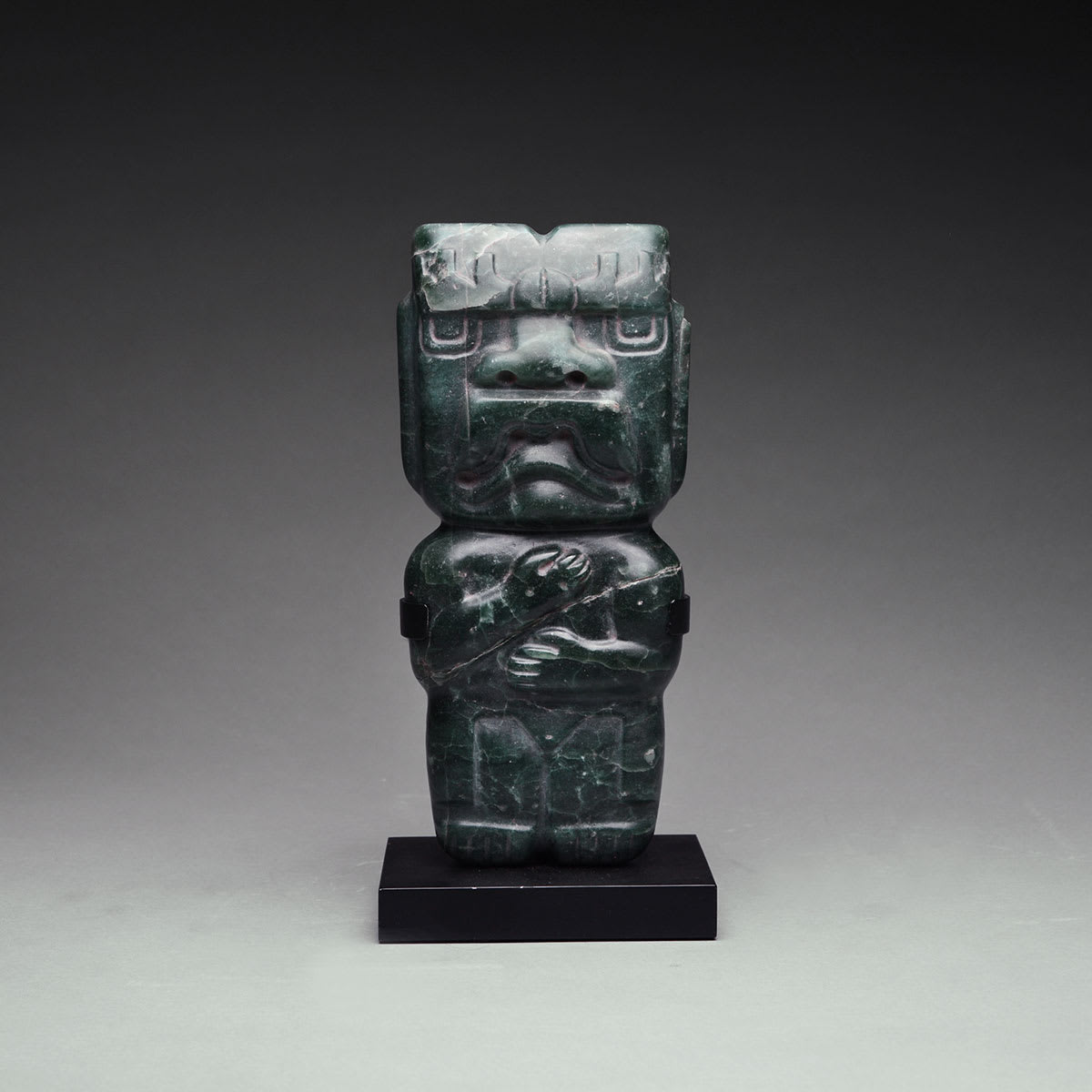Olmec Jade Celt Depicting a Were-Jaguar, 900 BC to 500 BC
Jade
22.9 x 10.2 cm
9 x 4 in
9 x 4 in
SP.162
Further images
The jaguar is one of the most potent symbols in Mesoamerican mythology. Often associated with the ruling power of the king, the jaguar was the most sacred beast in the...
The jaguar is one of the most potent symbols in Mesoamerican mythology. Often associated with the ruling power of the king, the jaguar was the most sacred beast in the animal pantheon. The veneration of this creature permeates the art of the Olmec. Considered to be the mother culture of Mesoamerican civilizations, the Olmec ruled a vast empire covering much of southern Mexico from around 1300-400 B.C. Today, they are famed for their colossal heads, giant sculptures that first alerted scholars to their existence in the latter half of the 19th Century. The figure depicted on this celt, a type of prehistoric tool shaped like an ax head, has taken the form of the “were-jaguar.” This is the name used to describe this type of figure (a mythical half man/half jaguar) exhibiting the puffy, fat cheeks and jowls of a human baby with the slanted eyes and curved mouth of the feline. We believe these works to represent a shaman in the midst of transformation. These great spiritual leaders were supposed to be able to transform and assume the powers of wild animals. The holes drilled into this celt reveal that is was a ceremonial object most likely hung on a string worn around the neck. Perhaps the celt would assist the shaman in his transformation. Overall, this celt attests to the artistic sophistication of the Olmec artists as well as to the cultures religious and spiritual beliefs.







